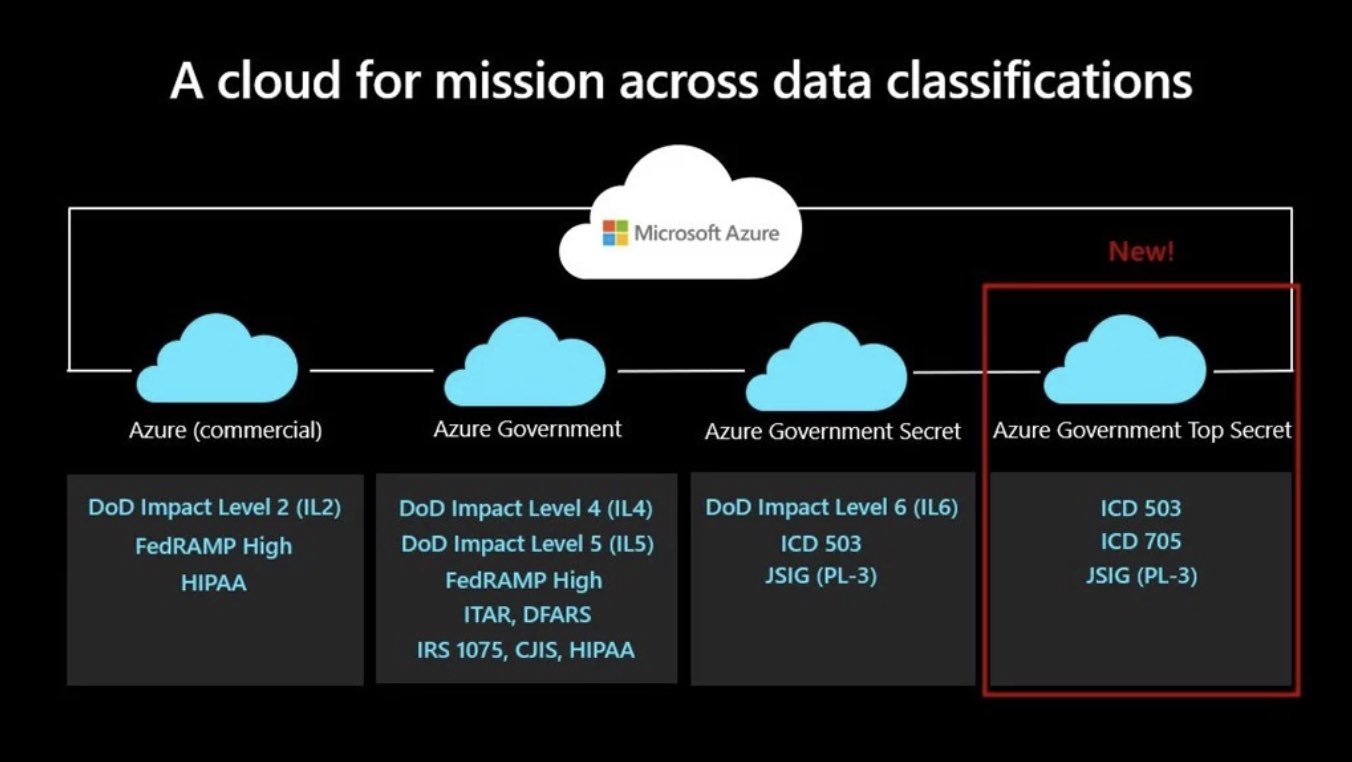Generative AI for Top Secret Missions? Microsoft Deploys GPT-4 for Classified Operations


Welcome to this week’s Intelligence Brief… on Tuesday, it was announced that Microsoft is deploying its GPT-4 large language model for use with its cloud services for classified work. In our analysis, we’ll be examining 1) the tech giant’s recent announcement, 2) a quick look at the history of Microsoft’s Azure Government Top Secret, and 3) the steps forward in the U.S. government’s implementation of GPT-4 for work in classified operations.
Quote of the Week
“We are going to have GPT-4 in an isolated environment for the first time.”
– William Chappell, Microsoft CTO for Strategic Missions and Technologies
Latest News: Recently at The Debrief, an international team of scientists say they’ve solved the centuries-old mystery of why ultra-thin sheets of gold glow. Meanwhile, scientists keep finding giant sinkholes in China where ancient forests and “lost” DNA are being discovered. You can find all of our recent stories at the end of this week’s newsletter.
Podcasts: In podcasts this week, on The Debrief Weekly Report Kenna and Stephanie look at a Neanderthal puzzle of the extraordinary kind, mysterious Roman artifacts, and more. Meanwhile, on The Micah Hanks Program, we examine recent UAP-related developments, as well as UFO folklore involving claims of “UFO silencers” from over the decades. You can subscribe to all The Debrief’s podcasts on our Podcasts Page.
Video News: On the latest episode of Rebelliously Curious, Chrissy Newton is joined by Chip Fletcher, PhD, and Phoebe Barnard, PhD, to discuss why we need to act now on global cultural change to save the planet. You can check out this interview and other great content from The Debrief on our official YouTube Channel.
With all that behind us, it’s now time to shift our attention over to the recent revelations by Microsoft this week, which represent the first time that an AI language model like GPT-4 has been instituted in an isolated environment… and the customer happens to be the U.S. Department of Defense.
Microsoft Generative AI to Aid with Classified Workloads
This week, Microsoft announced that it has officially instituted the GPT-4 large language model within an isolated Azure Government Top Secret cloud.
The announcement, made on Tuesday at the AI Expo for National Competitiveness, hosted by the Special Competitive Studies Project, revealed that an “air-gapped”, isolated instance of GPT-4 would be available for use by the Department of Defense in its cloud system.
Appearing at the event, William Chappell, Microsoft’s Chief Technology Officer for Strategic Missions and Technologies, said that having GPT-4 in an isolated and air-gapped environment will provide the existing capabilities available in unclassified environments in top-secret environments for the first time.
Background on Azure Government Top Secret
In collaboration with the U.S. Government, Microsoft developed Azure Government Top Secret and expanded services in Azure Government Secret to support a range of national security initiatives. Launched in 2021 for general use in U.S. national security missions, the software giant’s offerings aimed to empower the Intelligence Community (IC), Department of Defense (DoD), and Federal Civilian agencies to securely innovate, whether on-premises, in the cloud, or at the tactical edge.


Driving Azure Government Top Secret had been the multitude of challenges faced by mission leaders across various U.S. government environments, ranging from the necessity of working with increasingly large amounts of data to efforts toward modernizing legacy infrastructure. Additionally, Microsoft’s services were developed with a focus on safeguarding assets and people against the rapidly evolving global threat landscape, one that is increasingly becoming susceptible to advanced cyberattacks.
To address this range of demands, Microsoft offers a range of data classification options with its services, including Azure, Azure Government, Azure Government Secret, and Azure Government Top Secret, in order to provide flexibility and scalability for secure data processing. When it launched in 2021, Azure Government Top Secret featured over 60 services and Authorization to Operate (ATO) under Intelligence Community Directive (ICD) 503, along with accreditation in accordance with ICD 705 standards, ensuring top-level security for classified workloads.
GPT-4 in the Classified World
While Microsoft aims to empower government partners with agile, secure solutions that ensure the seamless transition from on-premises to the cloud that ensure ideal performance for mission-critical workloads, leveraging the abilities of generative AI like OpenAI’s GPT-4 while ensuring the protection of classified information is a primary objective for the Pentagon’s future operations.


According to Chappell, Microsoft’s deployment of GPT-4 capabilities with the Azure OpenAI Service within Azure Government Top Secret is a step toward making that a reality. Currently, Microsoft says it plans to work with the U.S. government in advance of full deployment as part of the work required for it to be accredited for tasks in the classified world.
Ultimately, the new technologies Microsoft provides will allow the DoD to optimize the use of GPT-4 for specific tasks and missions, in addition to adding data and constructing workflows specific to those operations’ demands, improving its capabilities overall through the use of AI, while also ensuring the security of classified missions.
That concludes this week’s installment of The Intelligence Brief. You can read past editions of The Intelligence Brief at our website, or if you found this installment online, don’t forget to subscribe and get future email editions from us here. Also, if you have a tip or other information you’d like to send along directly to me, you can email me at micah [@] thedebrief [dot] org, or Tweet at me @MicahHanks.


- Scientists Create Swarming Micro-Robots That Can “Hunt” Microplastics and Bacteria Contaminating Water
Scientists report the development of microbiotic swarms that capture microplastics and potentially harmful microbes in water, paving the way for new approaches to combatting pollution in our oceans and waterways.
- Astronomers Detect Unusual X-Ray Pulsar Producing Bursts of Energy Current Models Can’t Explain
An unusual celestial object recently discovered by astronomers has been revealed to be a bursting accreting millisecond X-ray pulsar, according to newly published research.
- Journey to Earth’s Nearest Black Hole
Recently, the Gaia collaboration discovered the most massive black hole that originated from the collapse of a star in the Milky Way galaxy. What would it be like to visit it?
- This Well-Known UFO Debunker is Skeptical of the DoD’s Recent Investigations into Aerial Mysteries. Here’s Why.
A prominent UFO skeptic says he has a few problems with recent investigations by the DoD’s All-domain Anomaly Resolution Office.
- Veins in Plant Leaves Inspire Creation of a New “Universal” Law Based on a Century-Old Theory
A new twist on a century-old law draws inspiration from nature, and could lead to more efficient batteries and improvements to a range of other technologies.
- Players of Immersive “FathomVerse” Will Help Science Solve Deep Sea Mysteries and Identify New Life Forms
The Monterey Bay Aquarium Research Institute has released a game called FathomVerse to help science solve the mysteries of deep-sea life.
- DARPA’s Futuristic Manta Ray Unmanned Underwater Vehicle Sees First Full-Scale Ocean Testing
DARPA’s Manta Ray prototype uncrewed underwater vehicle (UUV) has successfully completed initial full-scale tests in an ocean environment.
- New Fusion Milestone with Tungsten ‘WEST’ Tokamak Sustains Super-Hot Plasma for Record-Breaking Six Minutes
A record-breaking milestone in fusion has been achieved using a device internally clad in tungsten, according to researchers at Princeton Plasma Physics Laboratory.
- Synthetic Cells That Mimic Biology Could Offer Clues on Mysteries of Life, its Origins, and Extraterrestrials
Scientists are making progress in the development of synthetic cells capable of emulating the biological processes of living systems, which could expand our knowledge of life’s essential functions and potentially offer new clues about the origins of life on Earth.
- 75,000-Year-Old Neanderthal Woman’s Facial Reconstruciton Sheds New Light on Our Archaic Human Ancestors
Archaeologists from The University of Cambridge have unveiled the reconstructed face of a 75,000-year-old Neanderthal woman.
- Energy Scientists Say They Have Solved the Centuries-Old Mystery of Why Ultra-Thin Sheets of Gold Glow
An international team of energy scientists and theoretical physicists say they’ve solved the centuries-old mystery of why ultra-thin sheets of gold glow.
- Scientists Keep Finding Giant Sinkholes in China that Hide Ancient Forests, Unknown Wildlife, and Long Lost DNA
In the heart of China, massive sinkholes hide ancient forests teeming with life. A new study published in March finds that these forests contain long lost DNA.
- DoD Official Warns Congress About Russia’s Potential Use of a Nuclear Weapon in Space
This week, lawmakers in Washington were warned about a potentially devastating Russian anti-satellite nuclear weapon during a House Armed Services subcommittee hearing.
- Planet Earth’s Wakeup Call
Chip Fletcher, PhD & Phoebe Barnard, PhD join us to discuss their comprehensive paper and explain why we need to act now – a call for global cultural change to save the planet.
- Incident at Eglin Air Force Base
This week on The Micah Hanks Program, we dive into several issues with the All-domain Anomaly Resolution Office’s recent investigation into an alleged UAP incident at Eglin Air Force Base.
- James Webb Space Telescope Maps Weather on Planet 280 Light Years Away, Raising Hopes For Biosignature Detection
Scientists using NASA’s James Webb Space Telescope say they have successfully mapped the weather of a planet 280 light years away.
- This New Solar Thermal Propulsion System Could Revolutionize How We Navigate the Cosmos
Solar thermal propulsion has been a hot topic for future satellites in Earth’s orbit, but a new start-up promises to build it.
- Mysterious Roman Dodecahedrons Have Baffled Researchers for Centuries. These Theories Could Help Solve the Mystery.
The mysterious Roman dodecahedrons have baffled researchers for centuries. Now, recent discoveries could be moving archaeologists closer to unraveling their mystery.




